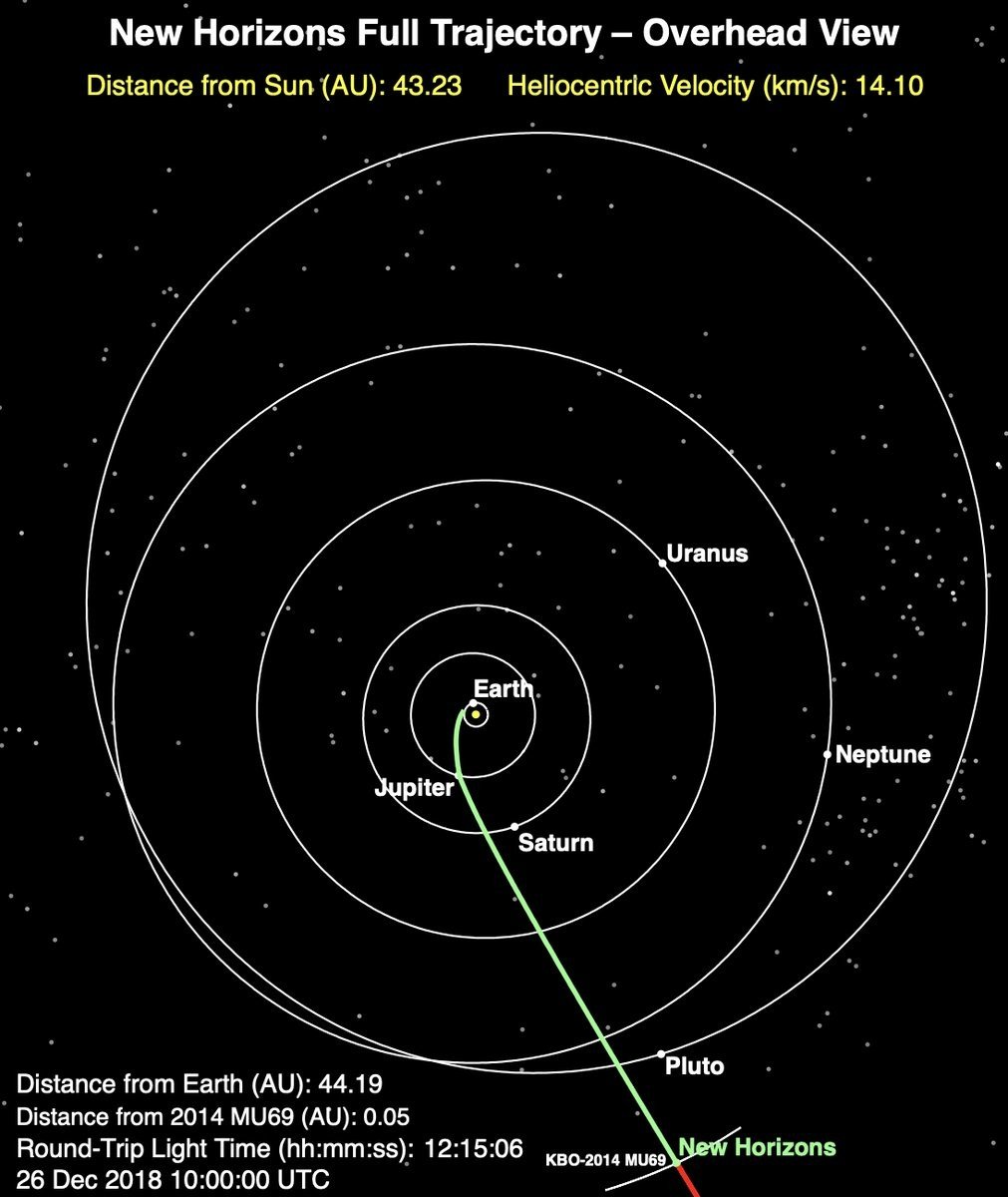Ultima Thule: NASA probe will reach tiny world at edge of solar system on New Year’s Day

NASA’s New Horizons spacecraft is set to go where no probe has ever gone before this New Year’s Day, when it beams back data from a tiny world that sits more than six billion kilometers away at the edge of the solar system.
The mysterious object the craft will be exploring is officially known as 2014 MU69 but its unofficial name is Ultima Thule. It picked up the unusual moniker, which means “beyond the known world,” following a NASA naming contest.
Got plans for #NewYears? Watch @NASANewHorizons make history as it reaches #UltimaThule, the farthest object ever explored by a spacecraft. 🛰https://t.co/Jn84tze2HYpic.twitter.com/j4LvhLmNz0
— Johns Hopkins APL (@JHUAPL) December 22, 2018
The ship is on course to reach its closest point to the object on January 1, a destination which will have taken 13 years to reach. Once the spacecraft flies by Ultima Thule, it will become the farthest world ever visited by a human-made object, a record that likely will stand for decades to come.
If everything goes to plan, New Horizons will cruise by Ultima Thule at a velocity of 51,500 kmph –nearly 15 kilometers per second– at 05:33am GMT on New Year's Day. It will pass within about 3,540 kilometers of the never-seen-before surface.

The object itself is only about 30 kilometers wide. Like Pluto, it sits in the remote Kuiper Belt, the vast, icy, realm which is believed to contain many dwarf planets and other frozen detritus from the creation of the solar system.
“This is a time capsule that is going to take us back four and a half billion years to the birth of the solar system,” said Alan Stern, the principal investigator on the project at the Southwest Research Institute, at a press briefing on Friday.
IT’S HAPPENING!! Flyby is upon us! @NewHorizons2015 is healthy and on course! The farthest exploration of worlds in history! #Science#NASA#Space#UltimaFlyby#UltimaThulepic.twitter.com/oca7Z6IH8l
— Alan Stern (@AlanStern) December 29, 2018
New Horizons, which launched in 2006, previously captured stunning images of Pluto when it flew by the dwarf planet in 2015.
"Across the whole team, people are ready, they're in the game, we can't wait to go exploring," Stern added. "It's been three-and-a-half years (since the Pluto flyby), we've worked so hard, people are ready to see that payoff and see what we can learn about the birth of our solar system.”
Like this story? Share it with a friend!












